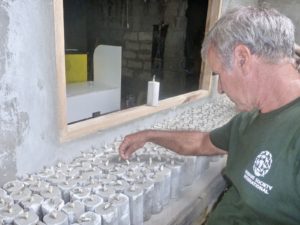You might remember Kalpana—I am happy to report that this year she celebrates her fifth rescue anniversary at Wildlife SOS. Formerly exploited and abused as a ‘begging’ elephant in Uttar Pradesh, Kalpana was rescued in 2019 and brought to the Wildlife SOS Elephant Hospital Campus (EHC) in Mathura for comprehensive...
Edinburgh has just hosted two weeks of meetings discussing the albatross and petrel conservation crisis. A room full of seabird scientists and officials from each of the member countries to the Agreement for the Conservation of Albatross and Petrels (ACAP), working together on recommendations aimed at saving seabirds from drowning in their thousands in fisheries, and now the new threat of colliding with offshore windfarms.
I was in the room representing Humane Society International Australia, because saving albatross is one of our priority campaigns. Just as I was in the room twenty years ago when the Agreement was first being negotiated, along with my high hopes that it will save these magnificent birds.

ACAP has spent those two decades refining the Best Practice Advice for the techniques fishers can use to prevent seabirds drowning on their longlines and trawl nets. They range from using weight to sink the baited hooks quickly out of the reach of the birds, to setting lines at night when less birds are foraging, to making boats unattractive to birds by using scaring lines and not discharging tasty fish waste overboard.
The expertise of HSI’s seabird scientist Nigel Brothers has been integral to developing many of these seabird safe techniques, and Nigel advised me at this meeting as I pushed for the strongest possible recommendations. Nigel is one of the scientists who first blew the whistle on the tens of thousands of seabirds drowning on tuna longlines in the 1990s and has spent much of his career trying to stop it.
The truth is that, thanks to people like Nigel, governments have known for a very long time how to stop the fisheries they govern from killing seabirds. They know exactly what needs to be done. Despite this the high mortality rates of albatross and petrels in many ACAP countries’ domestic fisheries, and in tuna longline fisheries on the high seas remains alarmingly high.

I expressed this frustration at the meeting. We told ACAP governments it was time to focus less on ever refining the advice, and more on implementing it and ensuring it is complied with.
HSI Australia presented a paper to the meeting to press the point. The paper analysed the poor uptake of ACAP’s Best Practice Advice by ACAP member countries, and the regional tuna fishing organisations many of the countries are also members of. We complained that it was hard to find out information on the measures countries are requiring their fishers to use because their reporting is inadequate.
To be fair, the governments took the criticism on board and agreed to develop more robust and transparent reporting. Neither did they argue with us when we said they had to get better at implementing their own advice.
The meeting also agreed to upgrade its strategy for persuading the tuna Regional Fisheries Management Organisations to adopt seabird friendly fishing techniques. I will join this working group.
HSI’s parting message to the meeting stressed the importance of rapidly ending fishing mortality so that albatross and petrel populations can be as healthy as possible to withstand the other threats that are coming down the line. Scientific papers to the meeting warned that extreme weather events driven by climate change are already having an impact on breeding colonies. Avian flu is also ominous. With these alarm bells sounded, it is more essential than ever that fisheries bycatch mitigation succeeds, so that we can give albatross and petrel populations the resilience they will need to survive worsening environmental and climate disruptions.



